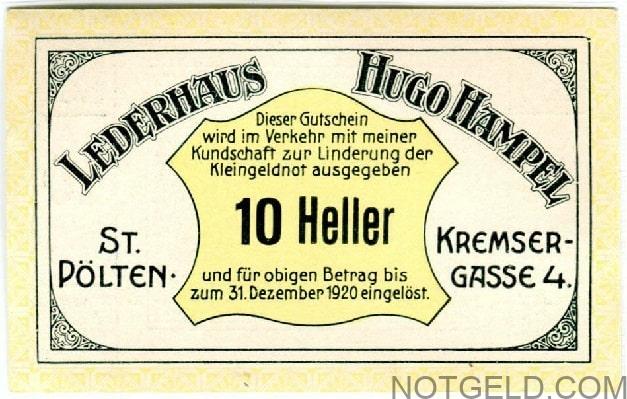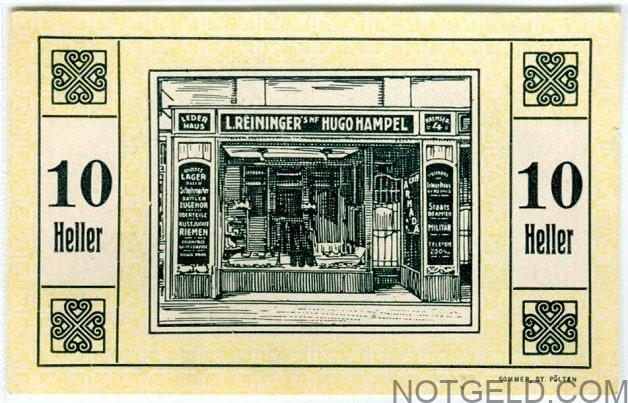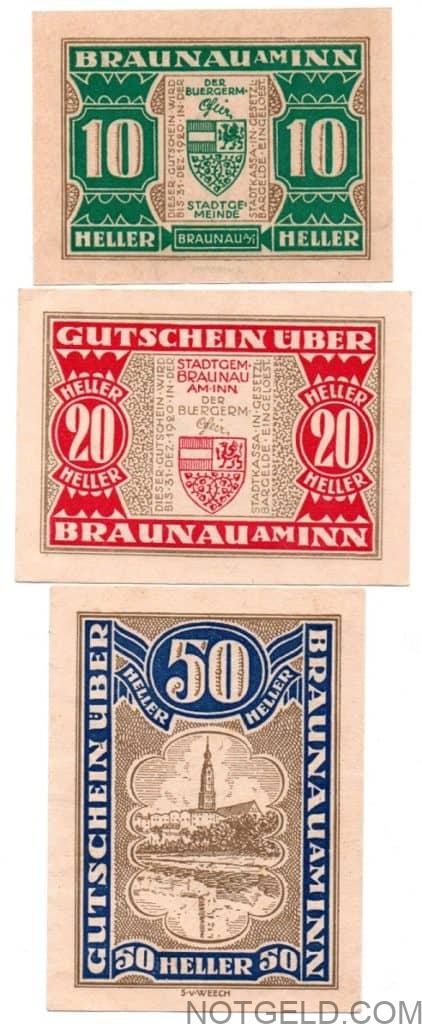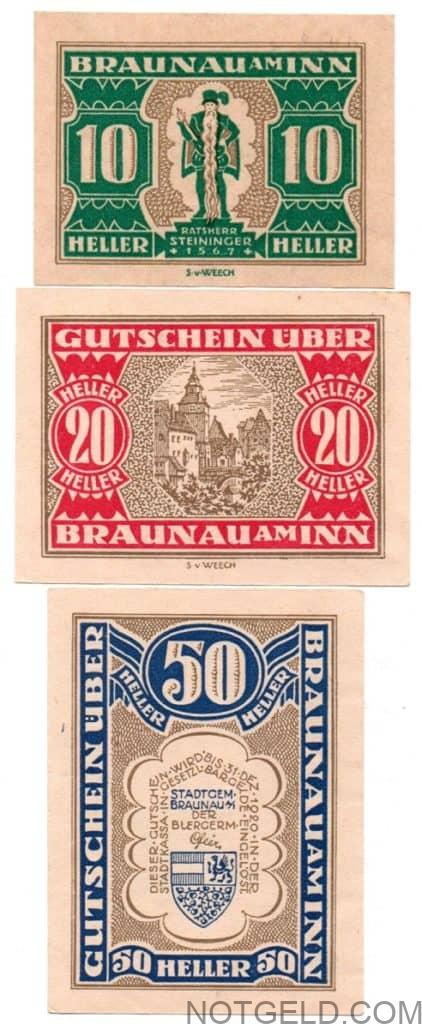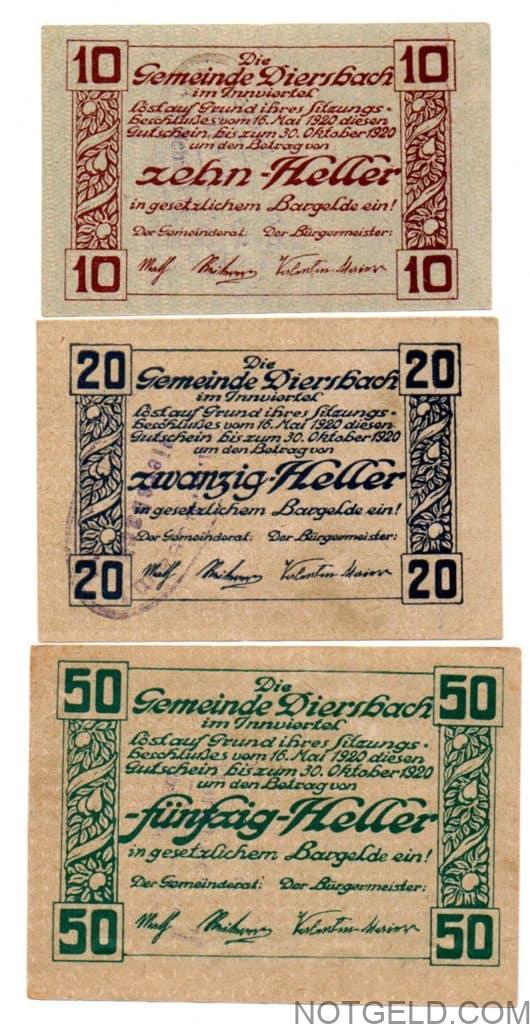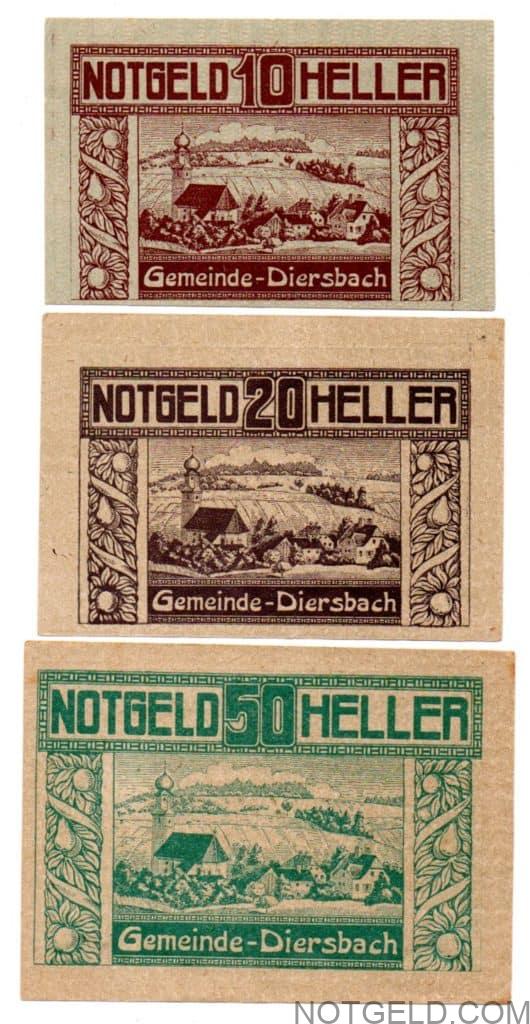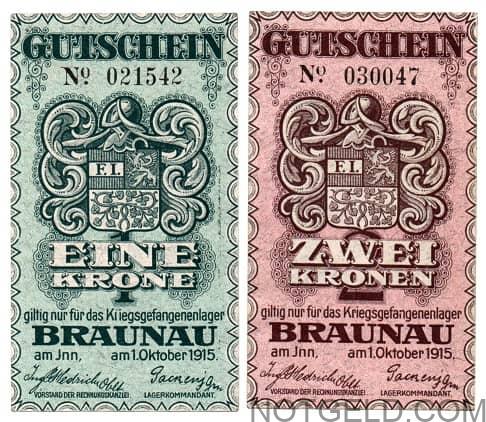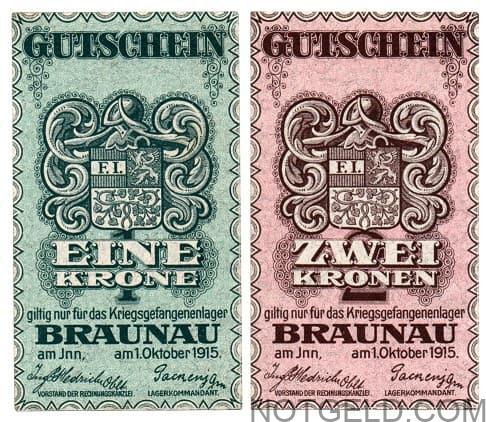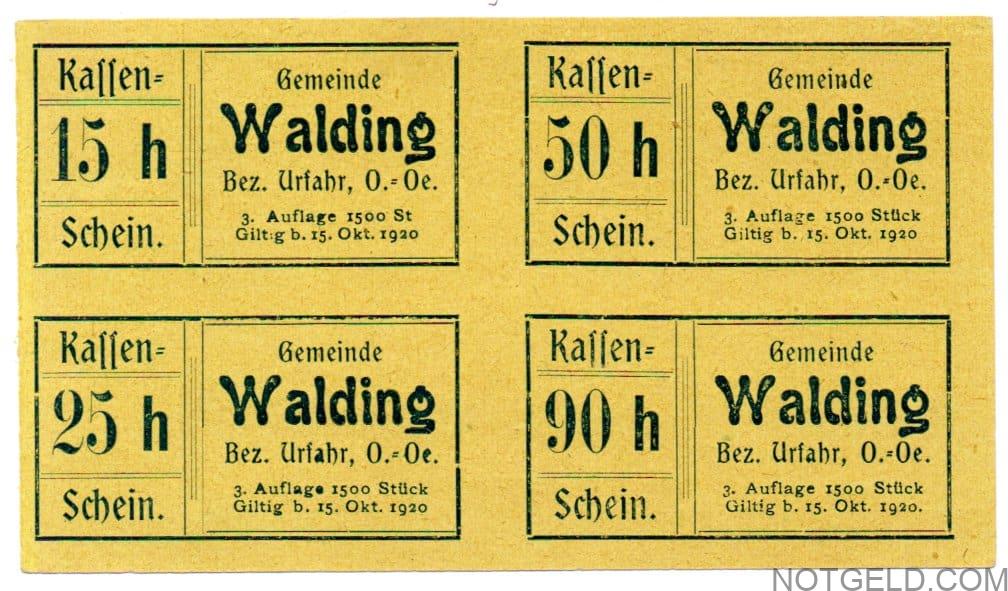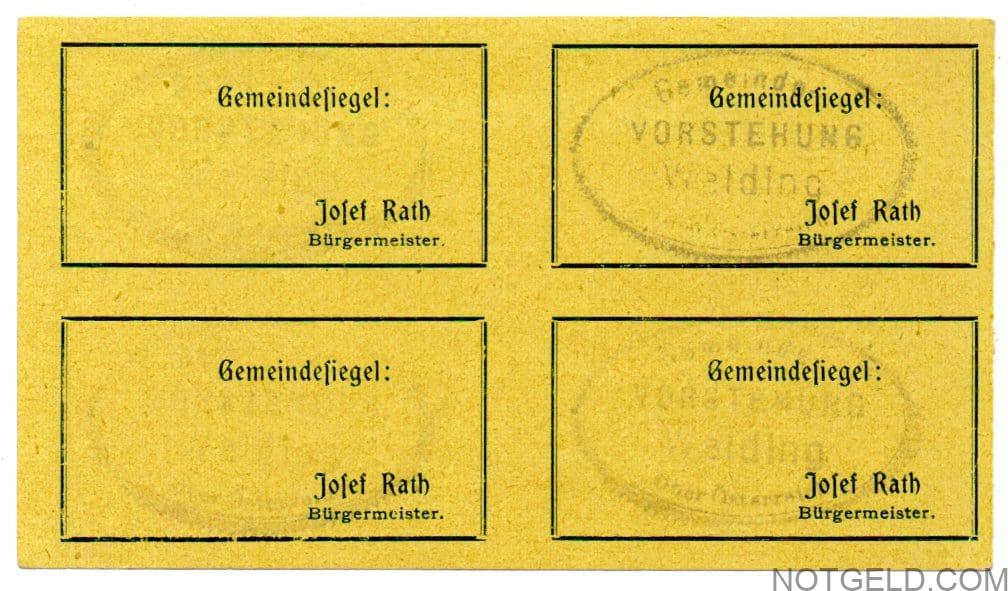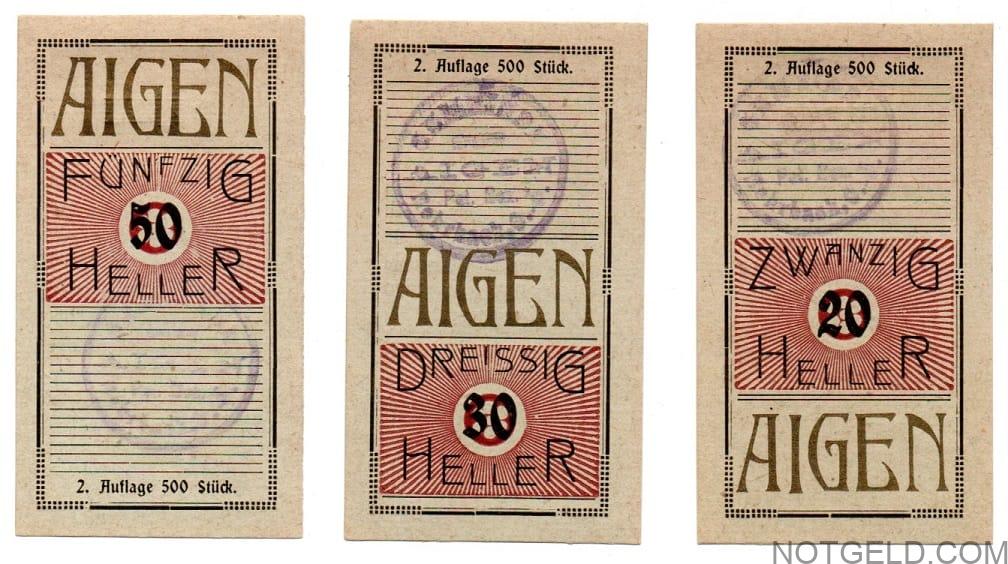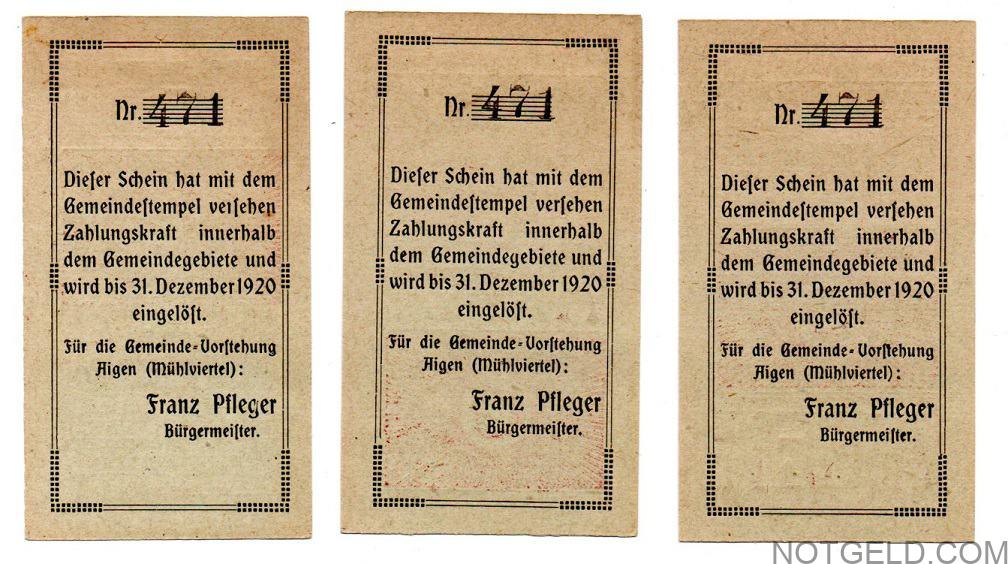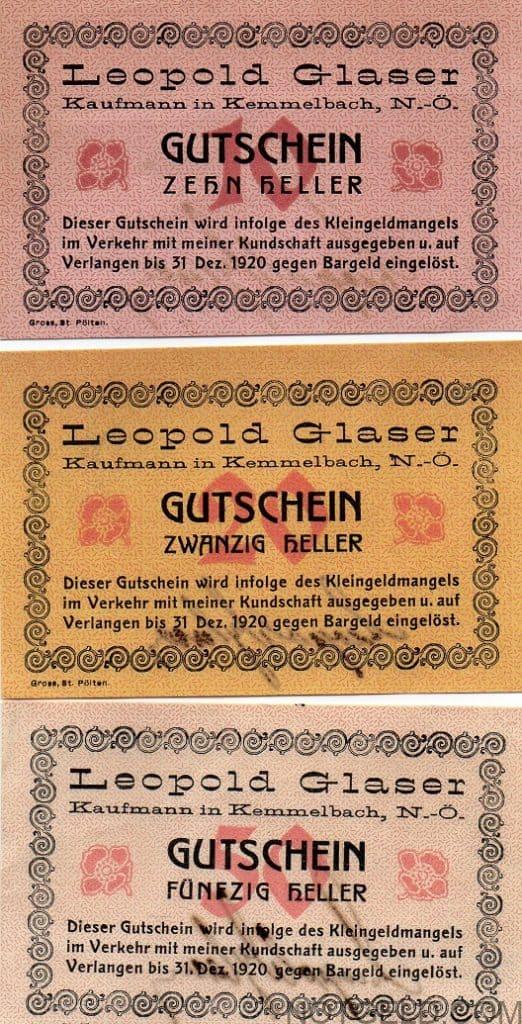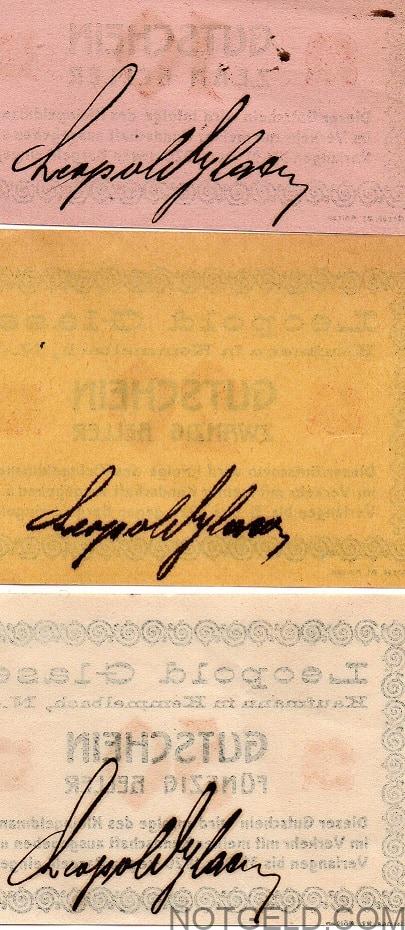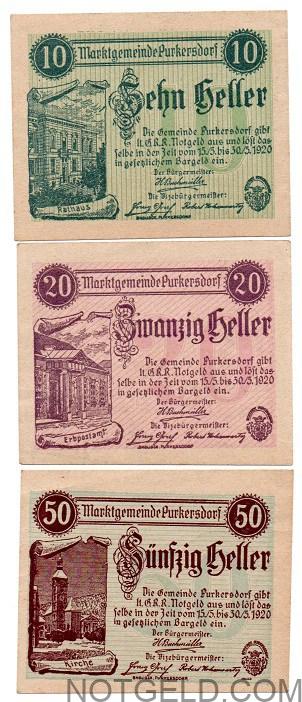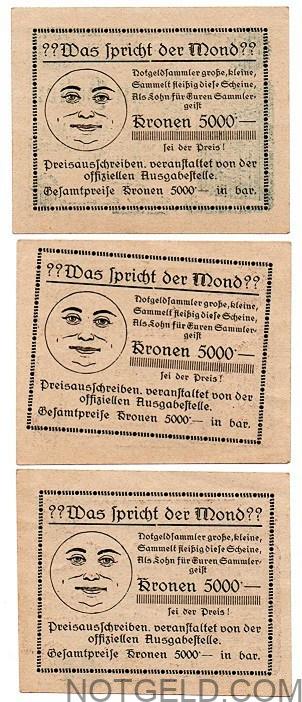Austrian notgeld, at first sight, do appear less interesting than the very colourful German types. However, the longer you spend collecting them, the more you find out about them and why they are so collectable. The great majority of the Austrian notgeld issues do seem of a lower quality, in paper, design and printing, but look beyond the ‘normal’ pieces and you will be amazed as to what is out there for the notgeld collector!
The basic Austrian notgeld catalogues are:
- Karl Jaksch/Albert Pick – ‘Katalog des Österreichischen Notgeldes 1916 – 1921’
- Magdelena Kreunz – ‘Katalog des Österreichischen Notgeldes 1916 – 1921’
- Johann Kodnar & Norbert Kuenstner – ‘Katalog des Österreichischen Notgeldes 1914 – 1924’ (2017)
The 10 heller valued ‘private’ notgeld issue, above, from the town of St. Poelten, was issued by the leather worker and shop-keeper Hugo Hampel. His shop is pictured on the back!
The two sets of 3 from Braunau am Inn and Diersbach, above, are ‘typical’ of the Austria notgeld sets collectors will have come across. The Diersbach set, does have a stampmark, which is slightly more unusual on Austrian notgeld, so is a good starter to see some differences for the collector to hopefully stumble upon. Dated around 1920, most are in sets but the printing colours, in general, do tend to be single-coloured rather than a very colourful mix.
The 3 colourful Braunau am Inn pieces above, are very interesting, as this town was the birthplace of one Adolf Hitler!
The following 2 notes, dated 1915, were issued for a ‘kriegsgefangenenlager’ (Prisoner-Of-War camp) in the same town!! They were only valid in the POW camp……..as it states on the notes in German…..’giltig nur fur das Kriegsgefangenenlager Braunau am Inn’. Face values are 1 & 2 krone……(crown)
As you can see and understand, as with almost everything though, the Austrian notgeld issues do contain some very interesting pieces or sets. As a good few examples, have a look at the ‘special’ sets below:
This very intereting uncut block of 4 pieces, above, was issued in Walding and was a limited edition of 1500 pieces (‘stuck’). It is a 3rd issue (‘auflage’).
The set of 3 from Aigen, above are from an issue of only 500 sets. They have the official stampmark, the gold printing (a good sign that the set is special in some way) and the serial numbers…….nowhere near as common on Austrian notgeld issues as compared to the German numbered or serialed pieces. All 3 of these things are good for a collector to watch out for as they could be a sign that the note is scarcer than normal…….officail stampmark, gold printing, serial number.
Austrian notgeld can come in several forms – paper, card, wood, playing card – to name a few. Here is a lovely looking pair of 95 heller pieces, issued as a postcard.
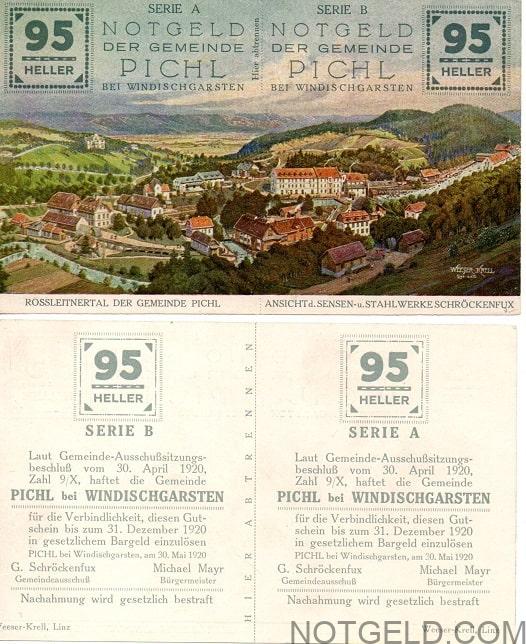
‘Private’ issues also exist in Austrian notgeld, issued by shops, cafe’s and individuals etc. The scan below is a lovely example. They clearly have the place of issue, the name of the issuer, the date of issue/validity and the issuer’s hand-written signature :
A very interesting Austrian set of 3 are the set from Purkersdorf that have their reverse side printed on. The ‘normal’ set have blank reverses but the ones I depict below, don’t! They were issued as part of a notgeld collectors’ competition, it seems. What a fascinating set!!:
What [language] does the moon speak?; / What does the moon say?
Notgeld collectors big & small,
Collect diligently these notes all,
And as a reward for your collector’s esprit
Let the prize 5,000 Kronen be!
Puzzle contest, organized by the official issuing office.
Total prices 5000 Kr. In cash.
I wonder if it’s an actual competition or whether in fact it’s a comment (either wise or sarcastic, or possibly both) on the value of collecting Notgeld as an investment? I tried various searches to see if there are any references to Notgeld collectors’ competitions but I can’t find anything.
The words in quotation marks are also a puzzle. I searched again – they seem to be a line from a poem, “Vulcano”, by the now obscure Sudeten poet Johann Carl (or also, Karl) Ratzer (1802-1863).
It’s about the moon and a mountain ruling over the night skyline; in the second verse the poet asks “What does the moon say [to this stony cliff]?” The moon says nothing, but the mountain seems to want to beg the moon not to shine into his crevices and reveal his dark secrets. Maybe the poem was better known back in the 1920s, and the taciturn moon was a proverbial expression for the keeping or revealing of secrets. Certainly the moon’s face on the note, with closed straight mouth and expressionless look, appears to be set against blabbing the secrets of the note and the non-existent competition – so perhaps they’re joke notes, Scherzscheine, like the ones from Eferding.
Fascinating stuff! (Comments by GNCC member, John Adams).
(Further Austrian notgeld articles are available to GNCC members, so if you want to learn more about your notgeld, please purchase GNCC membership from my homepage.)

